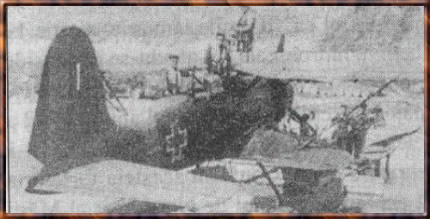
Initially, performance was quite adequate and the He-114 seemed to be the answer to Kriegsmarine's needs. However, after they were forced to switch to the BMW engine, performance dropped sharply, up to the point where the He-114 wasn't much better than the He-60 it was supposed to replace.Water handling became particularly bad also, and many pilots
complained that the 114
was difficult to put down in anything but clear weather. Nine more prototypes were hastily built in order to solve some of the problems, but none was better than the original. Eventually, the Kriegsmarine admitted defeat and asked for a replacement which became the highly successful Arado Ar-196. All the Heinkel He-114 were eventually sold to other countries, namely Romania, Spain and Sweden.